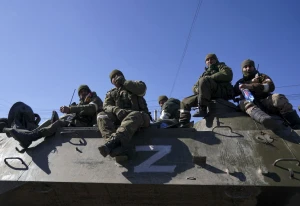
Seoul eyes military aid to Ukraine in response to North Korea’s support for Russia. Serhiy Zgurets' column
Ukraine and South Korea will step up intelligence sharing on Russia's use of North Korean military support in the war against Ukraine. South Korea may also offer weapons assistance and boost defense industry cooperation with Ukraine, a key area for both nations
New steps of Ukraine-South Korea cooperation
Ukraine and South Korea will intensify intelligence sharing regarding Russia’s use of North Korean military forces in the war against Ukraine. This agreement was reached between the presidents of Ukraine and South Korea on October 29, following a telephone conversation. It is also confirmed that a South Korean delegation will visit Ukraine soon to share detailed information about North Korea’s military involvement with Russia and discuss further cooperation.
Intelligence reports indicate that approximately 10,000 to 12,000 North Korean troops are currently in Russia, training at five eastern military grounds. Some of these North Korean troops are expected to participate in fighting in the Kursk region. However, it is notable that the physical condition and training level of the North Korean soldiers do not qualify them as special forces.
Additionally, North Korea is consistently supplying Russia with artillery shells. Ukrainian sources report the transfer of 3.5 million rounds of ammunition to Russia, an amount exceeding Russia's annual production. Moreover, North Korea has supplied Russia with KN-23 ballistic missiles, which, though inaccurate, still pose a challenge to Ukraine’s air defense systems.
Overall, this represents a significant escalation of Russian aggression, with a third country now publicly entering the conflict. In response, Ukraine anticipates more decisive actions from its partners.
South Korea may offer military assistance or explore defense industry collaboration with Ukraine, a critical area of focus. Furthermore, the presence of North Korean forces could provide additional impetus for lifting restrictions on the use of long-range weapons within Russian territory—a highly relevant issue for Ukraine.
New U.S. reactions to the Victory Plan
A month ago, Volodymyr Zelenskyy discussed this topic in Washington when he presented the Victory Plan. However, this plan did not alter Washington’s stance at that time. On October 29, an article was published in The New York Times containing new details about the U.S. response to this plan. The article states that the list of targets Kyiv provided for long-range strikes exceeds the number of ATACMS missiles that the United States is supplying to Ukraine on a limited basis. It also notes that Ukraine has requested Tomahawk cruise missiles, which have a range up to seven times greater than that of ATACMS.
Tomahawk missiles have a range of 1,600 km to 2,500 km. Kyiv views these missiles as a component of a non-nuclear deterrent force within Ukraine’s borders. However, the United States is not prepared to support this part of Zelenskyy’s plan. Currently, U.S. support aligns with the perspective that Ukraine has sufficient weaponry to prevent losing the war with Russia, though not enough to secure outright victory.
At present, the pace of arms supplies to Ukraine is slower than it was in 2023, when preparations were underway for a major counteroffensive by the Ukrainian Armed Forces. Ukraine’s partners report that previous stockpiles have been depleted, so now much depends on the production pace of Ukraine's own defense industry, along with the defense industries in the United States and Europe, to replenish stockpiles and maintain supplies to Ukraine.
Tanks from Croatia
At the same time, there are new developments regarding weapons supplies. Germany and Croatia are preparing to sign a framework agreement that will enable Croatia to purchase 50 Leopard 2A8 tanks for its army. In return, Croatia plans to transfer 30 M-84 tanks and 30 infantry fighting vehicles to the Ukrainian Defense Forces. Croatia currently has around 70 M-84 tanks, all of which are reported to be in good technical condition with solid combat capabilities.
Mykola Salamaha, a military expert specializing in armored vehicles and a lieutenant colonel in the Ukrainian Armed Forces, explained that the M-84 tanks date back to the era of the Socialist Federal Republic of Yugoslavia, which had a license from the USSR to produce T-72M tanks. A company in Croatia has since modernized these tanks, and the M-84s currently in service with the Croatian Armed Forces have undergone multiple upgrades. These tanks feature a modern fire control system superior to that of the Russian T-72B. This upgrade is advantageous for mechanics and drivers familiar with the T-72 tank, as the M-84’s design will be familiar. However, commanders and gunners will need some additional training to operate the Omega-84 fire control system, which incorporates Slovenian-made sights and surveillance devices.
Salamaha also noted that, while the role of tanks has remained largely unchanged over the nearly three years of war, battlefield conditions have become increasingly complex. Modern warfare now involves the widespread use of anti-tank minefields, high-precision munitions, and advanced technologies, including drones and FPV drones. As two technically advanced nations face off, we see tanks protected with anti-drone nets, makeshift “grills” (protective grates over the turret), and electronic warfare systems.
The lieutenant colonel commented on Ukraine’s tank tactics, acknowledging certain challenges in coordinating armored vehicles on the battlefield. At the battalion and brigade levels, there is currently no standardized approach to using tanks or to coordinating tank and infantry maneuvers. Commanders sometimes order tanks to fire on specific positions or go “hunting” for targets, aiming to visibly support the infantry. However, this approach can be risky, as Russian forces employ reconnaissance drones and ammunition barriers to “hunt” Ukrainian tanks attempting high-risk maneuvers.
Salamaha added that the American Bradley infantry fighting vehicle (IFV) is among the best options for Ukraine’s needs. Ukraine already has a significant number of M2A2 ODS-SA Bradleys in service, while the M2A3 Bradley and the newer M2A7 variant provide even more advanced capabilities. The United States has a large stock of IFVs, making it feasible to supply several hundred in a relatively short time. Securing these additional vehicles would be the optimal path forward for Ukraine, requiring close collaboration among diplomats, parliamentarians, and the military.
- News












































